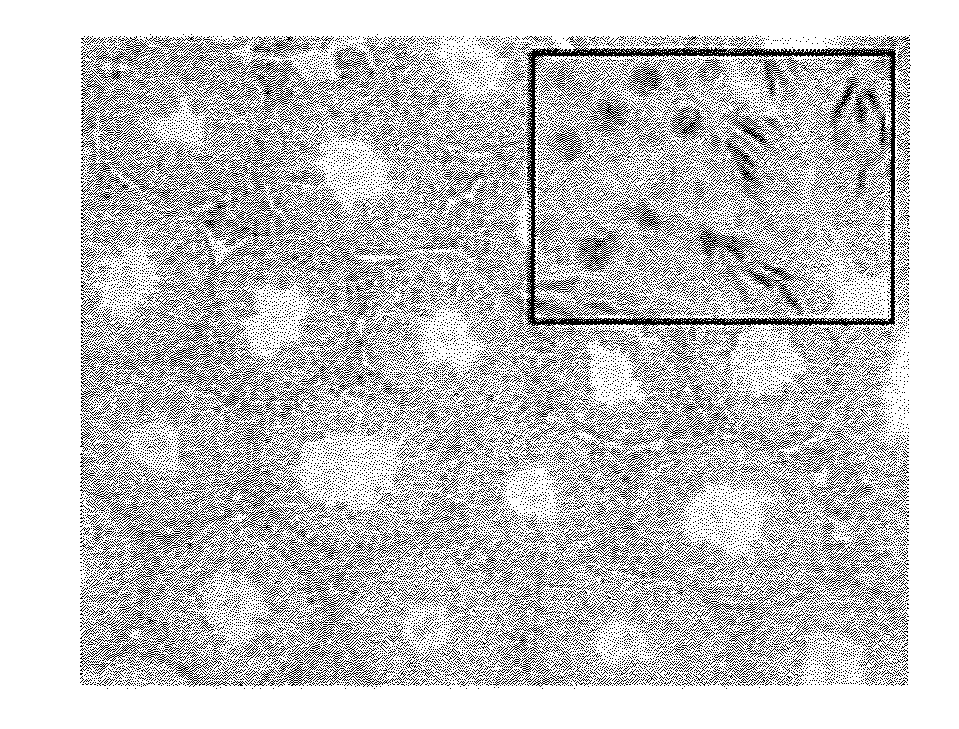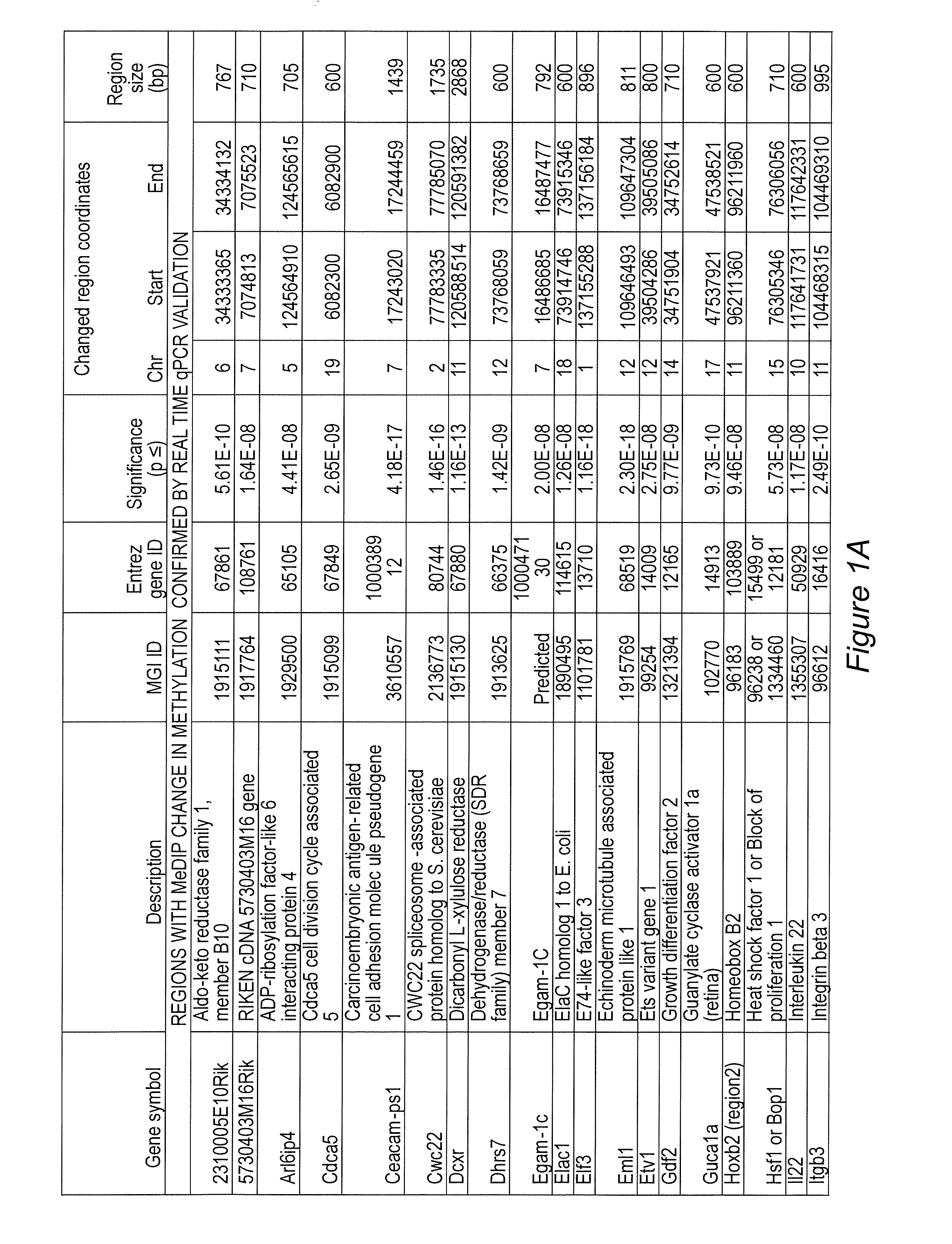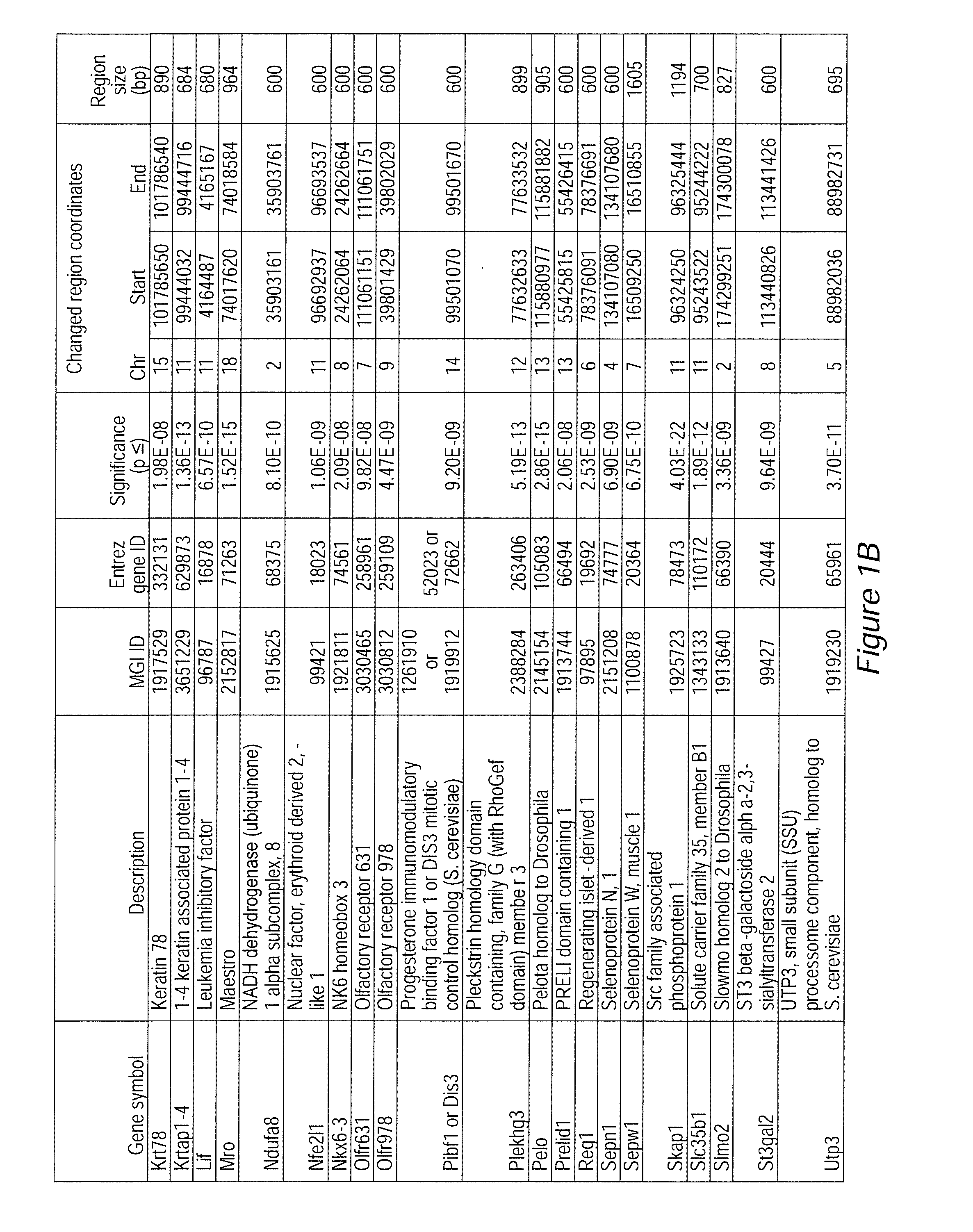Genomic features associated with epigenetic control regions and transgenerational inheritance of epimutations
a technology of epigenetic control and gene features, applied in the field of epigenetic control region and transgenerational inheritance of epimutations, to achieve the effects of promoting transgenerational spermatogenic cell defects, increasing or decreasing dna methylation, and being more sensitive and accurate to identify
- Summary
- Abstract
- Description
- Claims
- Application Information
AI Technical Summary
Benefits of technology
Problems solved by technology
Method used
Image
Examples
example 1
REFERENCES FOR BACKGROUND AND EXAMPLE 1
[0088]1. Skinner M K, Manikkam M, Guerrero-Bosagna C (2010) Epigenetic transgenerational actions of environmental factors in disease etiology. Trends Endocrinol Metab 21: 214-222.[0089]2. Anway M D, Cupp A S, Uzumcu M, Skinner M K (2005) Epigenetic transgenerational actions of endocrine disruptors and male fertility. Science 308: 1466-1469.[0090]3. Jirtle R L, Skinner M K (2007) Environmental epigenomics and disease susceptibility. Nat Rev Genet. 8: 253-262.[0091]4. Kavlock R, Cummings A (2005) Mode of action: inhibition of androgen receptor function—vinclozolin-induced malformations in reproductive development. Crit. Rev Toxicol 35: 721-726.[0092]5. Guerrero-Bosagna C, Settles M, Lucker B J, Skinner M K (2010) Epigenetic transgenerational actions of vinclozolin on promoter regions of the sperm epigenome. PLoS ONE 5: e13100.[0093]6. Anway M D, Leathers C, Skinner M K (2006) Endocrine disruptor vinclozolin induced epigenetic transgenerational ad...
example 2
REFERENCES FOR EXAMPLE 2
[0157]1. Skinner M K, Manikkam M, Guerrero-Bosagna C (2010) Epigenetic transgenerational actions of environmental factors in disease etiology. Trends Endocrinol Metab 21: 214-222.[0158]2. Anway M D, Cupp A S, Uzumcu M, Skinner M K (2005) Epigenetic transgenerational actions of endocrine disruptors and male fertility. Science 308: 1466-1469.[0159]3. Jirtle R L, Skinner M K (2007) Environmental epigenomics and disease susceptibility. Nat Rev Genet. 8: 253-262.[0160]4. Kavlock R, Cummings A (2005) Mode of action: inhibition of androgen receptor function—vinclozolin-induced malformations in reproductive development. Crit. Rev Toxicol 35: 721-726.[0161]5. Guerrero-Bosagna C, Settles M, Lucker B J, Skinner M K (2010) Epigenetic transgenerational actions of vinclozolin on promoter regions of the sperm epigenome. PLoS ONE 5: e13100.[0162]6. Anway M D, Leathers C, Skinner M K (2006) Endocrine disruptor vinclozolin induced epigenetic transgenerational adult-onset disea...
PUM
| Property | Measurement | Unit |
|---|---|---|
| pH | aaaaa | aaaaa |
| pH | aaaaa | aaaaa |
| humidity | aaaaa | aaaaa |
Abstract
Description
Claims
Application Information
 Login to View More
Login to View More - R&D
- Intellectual Property
- Life Sciences
- Materials
- Tech Scout
- Unparalleled Data Quality
- Higher Quality Content
- 60% Fewer Hallucinations
Browse by: Latest US Patents, China's latest patents, Technical Efficacy Thesaurus, Application Domain, Technology Topic, Popular Technical Reports.
© 2025 PatSnap. All rights reserved.Legal|Privacy policy|Modern Slavery Act Transparency Statement|Sitemap|About US| Contact US: help@patsnap.com



